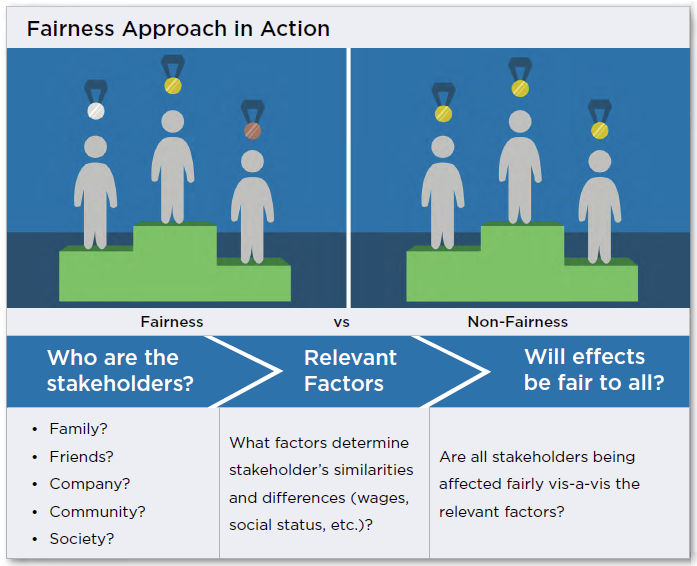Five Ways To Shape Ethical Decisions: Fairness Approach
June 5, 2018
We are in the middle of reviewing popular western ethical theories you can use to debrief a case or ethical dilemma in your class.
The Fairness Approach focuses on the fair and equitable distribution of good and harm, and/or the social benefits and social costs, across the spectrum of society. It starts with the premise that all equals should be treated equally, and those who are unequal due to relevant differences, should be treated differently in a manner that is fair and proportionate to, or commensurate with, their difference. A classic example would be the payment of a group of employees at different salary levels based on the contribution their work effort makes to the corporation’s profitability.
Here we assess our action in terms of its fairness to those affected. Are those who are similar in some relevant aspect treated similarly? Are those who are different in some relevant way treated differently based on a legitimate distinction and a standard of fairness? Are some favored where they may receive certain benefits for no justifiable reason? Is there a discriminatory practice where some, who are no different than others, bear a burden that is not imposed on the rest? What are the relevant factors that determine similarities and differences of those in a group? What is the fair course of action for all the stakeholders or all entities which may be affected by the outcome?



.png?width=80&name=1-questions%20(1).png)